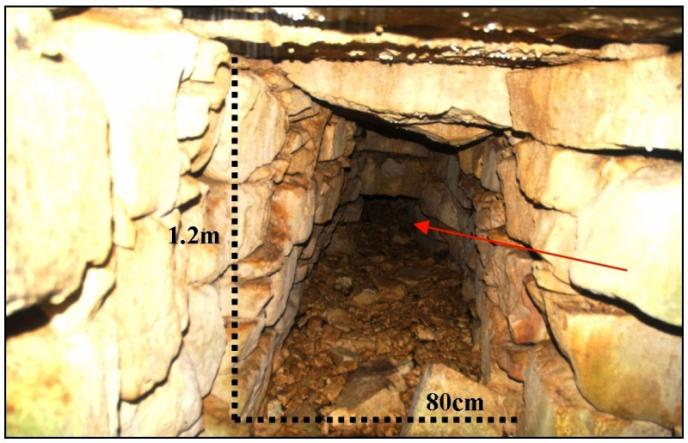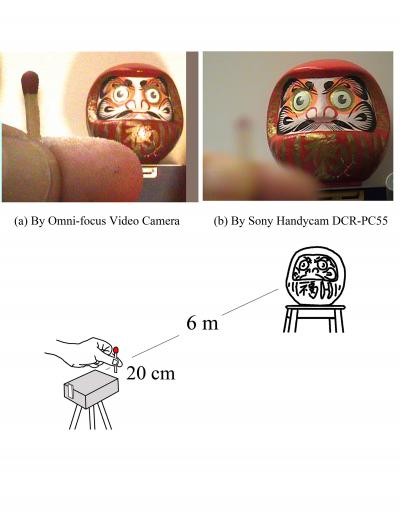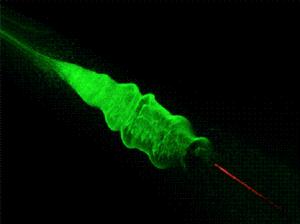
© Kirk French; Penn StateInterior of the Piedras Bolas aqueduct showing the abrupt reduction in conduit size near the exit.
A water feature found in the Maya city of Palenque, Mexico, is the earliest known example of engineered water pressure in the new world, according to a collaboration between two Penn State researchers, an archaeologist and a hydrologist. How the Maya used the pressurized water is, however, still unknown.
"Water pressure systems were previously thought to have entered the New World with the arrival of the Spanish," the researchers said in a recent issue of the
Journal of Archaeological Science. "Yet, archaeological data, seasonal climate conditions, geomorphic setting and simple hydraulic theory clearly show that the Maya of Palenque in Chiapas, Mexico, had empirical knowledge of closed channel water pressure predating the arrival of Europeans."


